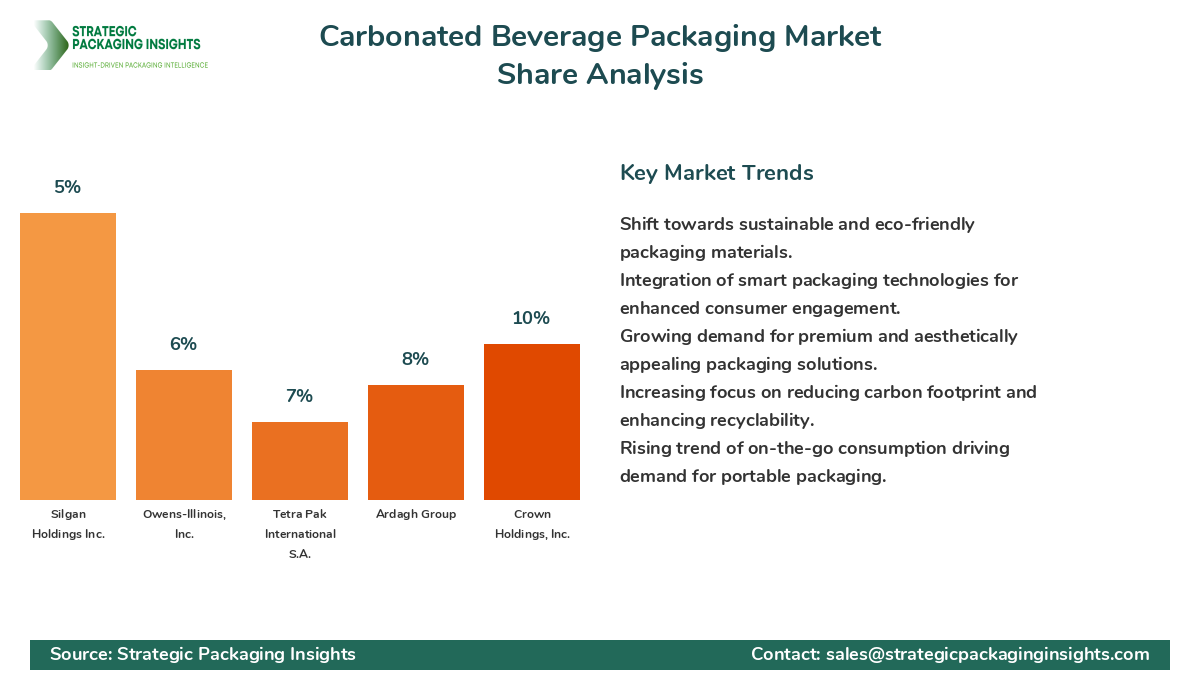- Home
- Beverage Packaging
- Carbonated Beverage Packaging Market Size, Future Growth and Forecast 2033
Carbonated Beverage Packaging Market Size, Future Growth and Forecast 2033
Carbonated Beverage Packaging Market Segments - by Material (Glass, Metal, Plastic, Paperboard), Type (Bottles, Cans, Cartons, Others), Application (Soft Drinks, Alcoholic Beverages, Functional Drinks, Others), and End-User (Beverage Manufacturers, Retailers, Distributors, Others) - Market Dynamics, Growth Opportunities, Strategic Drivers, and PESTLE Outlook (2025–2033)
Carbonated Beverage Packaging Market Outlook
The carbonated beverage packaging market was valued at $31.5 billion in 2024 and is projected to reach $45.8 billion by 2033, growing at a CAGR of 4.2% during the forecast period 2025-2033. This market is driven by the increasing demand for carbonated beverages across the globe, coupled with the rising trend of on-the-go consumption. The packaging industry is witnessing a shift towards sustainable and eco-friendly materials, which is further propelling the market growth. The introduction of innovative packaging solutions that enhance the shelf life and appeal of carbonated beverages is also contributing to the market expansion. Additionally, the growing urban population and changing consumer lifestyles are leading to increased consumption of ready-to-drink beverages, thereby boosting the demand for effective packaging solutions.
However, the market faces certain challenges such as stringent environmental regulations regarding the use of plastic and other non-biodegradable materials. The increasing awareness about the environmental impact of packaging waste is pushing manufacturers to adopt sustainable practices, which can be cost-intensive. Despite these challenges, the market holds significant growth potential due to the continuous advancements in packaging technologies and the rising demand for premium and aesthetically appealing packaging. The focus on reducing carbon footprint and enhancing recyclability is expected to open new avenues for market players in the coming years.
Report Scope
| Attributes | Details |
| Report Title | Carbonated Beverage Packaging Market Size, Future Growth and Forecast 2033 |
| Base Year | 2024 |
| Historic Data | 2017-2023 |
| Forecast Period | 2025-2033 |
| Number of Pages | 197 |
| Material | Glass, Metal, Plastic, Paperboard |
| Type | Bottles, Cans, Cartons, Others |
| Application | Soft Drinks, Alcoholic Beverages, Functional Drinks, Others |
| End-User | Beverage Manufacturers, Retailers, Distributors, Others |
| Customization Available | Yes* |
Opportunities & Threats
The carbonated beverage packaging market presents numerous opportunities for growth, primarily driven by the increasing consumer preference for sustainable and eco-friendly packaging solutions. As environmental concerns continue to rise, consumers are becoming more conscious of the packaging materials used in their favorite beverages. This shift in consumer behavior is encouraging manufacturers to innovate and develop packaging solutions that are not only functional but also environmentally friendly. The adoption of biodegradable and recyclable materials is gaining traction, offering a lucrative opportunity for companies to differentiate themselves in the market. Furthermore, the growing trend of premiumization in the beverage industry is driving the demand for high-quality, visually appealing packaging that enhances the overall consumer experience.
Another significant opportunity lies in the technological advancements in packaging design and manufacturing processes. The integration of smart packaging technologies, such as QR codes and NFC tags, is enabling brands to engage with consumers in new and interactive ways. These technologies provide valuable information about the product, its origin, and its sustainability credentials, thereby building trust and loyalty among consumers. Additionally, the rise of e-commerce and online retailing is creating a demand for packaging solutions that ensure product safety and integrity during transportation. Companies that can offer innovative, durable, and cost-effective packaging solutions for the online retail sector are likely to gain a competitive edge in the market.
Despite the promising opportunities, the carbonated beverage packaging market faces certain restrainers that could hinder its growth. One of the primary challenges is the fluctuating prices of raw materials, which can impact the overall cost of packaging production. The volatility in the prices of materials such as aluminum, glass, and plastics can pose a significant challenge for manufacturers, affecting their profit margins. Additionally, the stringent regulations imposed by governments and environmental agencies regarding the use of certain packaging materials can limit the options available to manufacturers. Companies need to navigate these regulatory landscapes carefully to ensure compliance while maintaining cost-effectiveness and product quality.
The competitive landscape of the carbonated beverage packaging market is characterized by the presence of several key players who are actively engaged in product innovation and strategic partnerships to strengthen their market position. The market is highly fragmented, with a mix of global and regional players competing for market share. Companies are focusing on expanding their product portfolios and enhancing their production capabilities to cater to the growing demand for sustainable packaging solutions. The emphasis on research and development activities to introduce innovative and eco-friendly packaging materials is a common strategy adopted by market leaders.
Among the major players in the market, Amcor Limited holds a significant share due to its extensive range of packaging solutions and strong global presence. The company is known for its commitment to sustainability and has been actively investing in the development of recyclable and biodegradable packaging materials. Ball Corporation is another prominent player, renowned for its expertise in Metal Packaging solutions. The company's focus on lightweight and sustainable packaging has helped it maintain a competitive edge in the market. Crown Holdings, Inc. is also a key player, offering a wide range of metal and glass packaging solutions for the beverage industry.
Other notable companies in the market include Ardagh Group, which specializes in glass and metal packaging, and Tetra Pak International S.A., known for its innovative carton packaging solutions. These companies are leveraging their technological expertise and global distribution networks to expand their market reach and enhance their product offerings. Additionally, companies like Owens-Illinois, Inc. and Silgan Holdings Inc. are focusing on strategic acquisitions and collaborations to strengthen their market position and diversify their product portfolios.
In conclusion, the carbonated beverage packaging market is witnessing intense competition, with companies striving to differentiate themselves through innovation and sustainability. The focus on reducing environmental impact and enhancing consumer engagement is driving the development of new packaging solutions. As the market continues to evolve, companies that can effectively balance cost, sustainability, and functionality are likely to emerge as leaders in the industry.
Key Highlights Carbonated Beverage Packaging Market
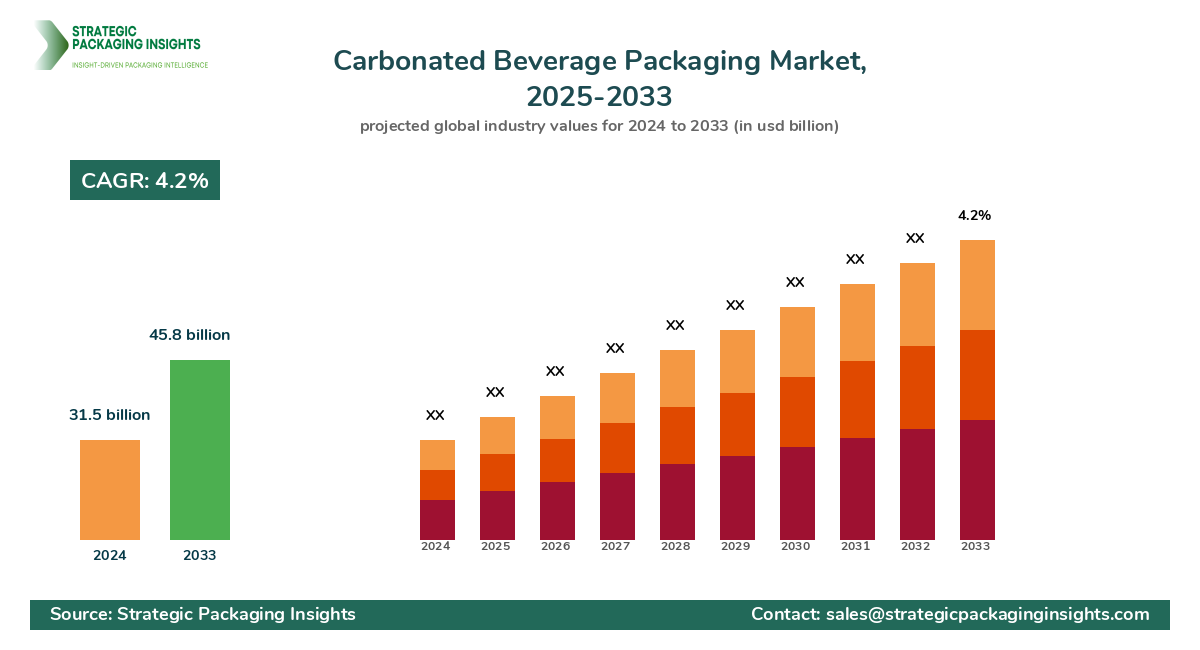
- Increasing demand for sustainable and eco-friendly packaging solutions.
- Technological advancements in smart packaging technologies.
- Rising trend of premiumization in the beverage industry.
- Growing e-commerce and online retailing driving demand for durable packaging.
- Fluctuating raw material prices impacting production costs.
- Stringent environmental regulations influencing packaging material choices.
- Focus on reducing carbon footprint and enhancing recyclability.
- Intense competition among key players driving innovation.
- Expansion of product portfolios and production capabilities by market leaders.
- Strategic partnerships and collaborations to strengthen market position.
Premium Insights - Key Investment Analysis
The carbonated beverage packaging market is witnessing significant investment activity, driven by the growing demand for sustainable and innovative packaging solutions. Venture capital firms and private equity investors are increasingly focusing on companies that offer eco-friendly and technologically advanced packaging options. The emphasis on sustainability and environmental responsibility is attracting substantial funding, as investors recognize the long-term potential of these solutions in the evolving market landscape. Mergers and acquisitions are also prevalent, with larger companies acquiring smaller, innovative firms to enhance their product offerings and expand their market presence.
Investment valuations in the carbonated beverage packaging market are on the rise, reflecting the increasing importance of sustainable packaging solutions. Companies that can demonstrate a strong commitment to sustainability and innovation are attracting higher valuations, as investors seek to capitalize on the growing consumer demand for environmentally friendly products. The return on investment (ROI) expectations are favorable, given the market's steady growth trajectory and the increasing adoption of sustainable practices by major beverage brands.
Emerging investment themes in the market include the development of biodegradable and Recyclable Packaging materials, as well as the integration of smart packaging technologies. These themes are gaining traction as companies strive to meet consumer expectations for transparency, convenience, and sustainability. The strategic rationale behind major deals often revolves around enhancing product portfolios, expanding geographic reach, and leveraging technological advancements to gain a competitive edge.
High-potential investment opportunities in the carbonated beverage packaging market are concentrated in regions with strong consumer demand for sustainable products, such as North America and Europe. These regions are witnessing a surge in investment activity, driven by favorable regulatory environments and a growing emphasis on reducing environmental impact. Additionally, the Asia Pacific region presents significant growth potential, with increasing urbanization and rising disposable incomes driving the demand for packaged beverages.
Carbonated Beverage Packaging Market Segments Insights
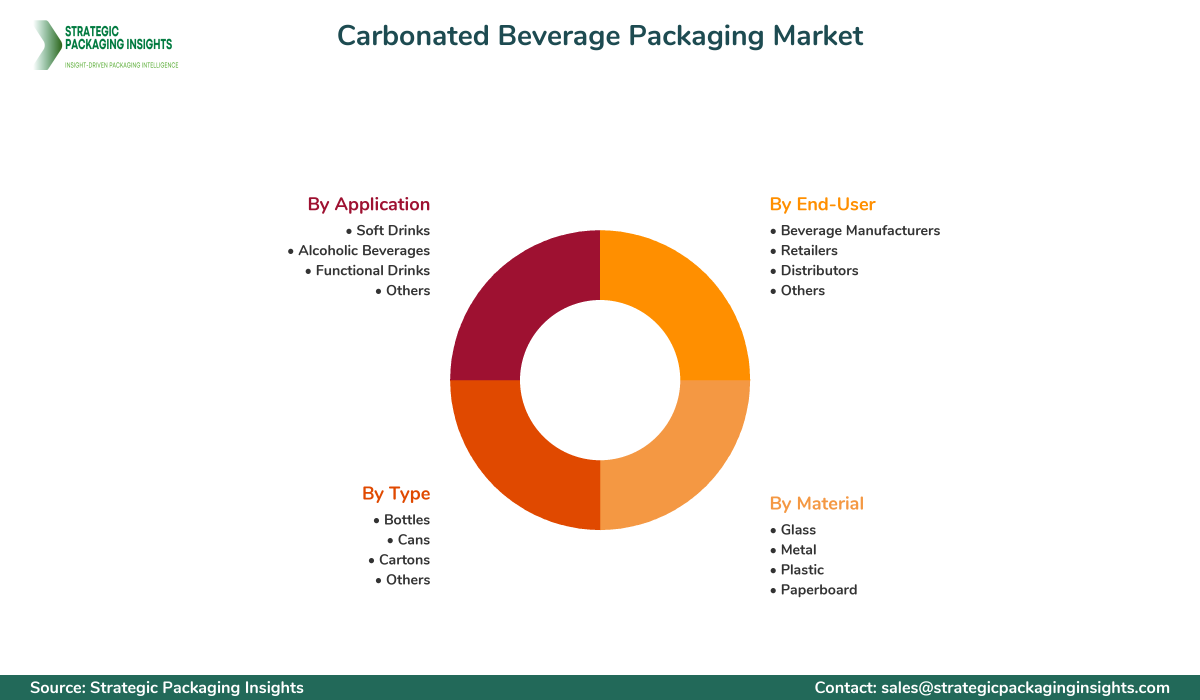
Material Analysis
The material segment of the carbonated beverage packaging market is dominated by glass, metal, plastic, and paperboard. Glass packaging is favored for its premium appeal and recyclability, making it a popular choice among environmentally conscious consumers. The demand for glass packaging is driven by the increasing preference for sustainable and aesthetically pleasing packaging solutions. Metal packaging, particularly aluminum cans, is widely used due to its lightweight nature and excellent barrier properties. The recyclability of aluminum makes it an attractive option for manufacturers looking to reduce their environmental footprint.
Plastic packaging, despite facing criticism for its environmental impact, remains a dominant segment due to its versatility and cost-effectiveness. The development of biodegradable and recyclable plastics is gaining momentum, as companies strive to address environmental concerns while maintaining the benefits of plastic packaging. Paperboard Packaging is also gaining traction, particularly in the form of cartons, as it offers a renewable and biodegradable alternative to traditional packaging materials. The increasing focus on sustainability is driving the demand for paperboard packaging, as consumers seek eco-friendly options for their beverages.
Type Analysis
The type segment of the carbonated beverage packaging market includes bottles, cans, cartons, and others. Bottles, particularly glass and PET bottles, are widely used for carbonated beverages due to their ability to preserve the carbonation and flavor of the product. The demand for bottles is driven by the growing consumer preference for convenient and portable packaging solutions. Cans, especially aluminum cans, are popular for their lightweight nature and recyclability. The increasing focus on reducing plastic waste is boosting the demand for cans, as they offer a sustainable alternative to plastic bottles.
Cartons are gaining popularity as an eco-friendly packaging option, particularly for functional and premium beverages. The demand for cartons is driven by their renewable nature and the ability to provide a unique and attractive packaging solution. Other packaging types, such as pouches and tetra packs, are also witnessing growth, as they offer innovative and convenient packaging solutions for on-the-go consumption. The increasing demand for diverse packaging options is driving companies to expand their product offerings and cater to the evolving consumer preferences.
Application Analysis
The application segment of the carbonated beverage packaging market is categorized into soft drinks, alcoholic beverages, functional drinks, and others. Soft drinks represent the largest application segment, driven by the high consumption of carbonated beverages across the globe. The demand for soft drink packaging is fueled by the increasing consumer preference for convenient and portable packaging solutions. Alcoholic beverages, particularly beer and cider, also contribute significantly to the market, with cans and bottles being the preferred packaging options.
Functional drinks, including energy drinks and sports drinks, are witnessing rapid growth, driven by the increasing consumer focus on health and wellness. The demand for functional drink packaging is driven by the need for innovative and convenient packaging solutions that cater to the active lifestyles of consumers. Other applications, such as flavored waters and carbonated teas, are also gaining traction, as consumers seek diverse and refreshing beverage options. The growing demand for a wide range of carbonated beverages is driving companies to innovate and develop packaging solutions that enhance the consumer experience.
End-User Analysis
The end-user segment of the carbonated beverage packaging market includes beverage manufacturers, retailers, distributors, and others. Beverage manufacturers represent the largest end-user segment, as they are the primary consumers of packaging solutions for their products. The demand for packaging solutions from beverage manufacturers is driven by the need to enhance product appeal, extend shelf life, and ensure product safety. Retailers and distributors also play a crucial role in the market, as they require packaging solutions that facilitate easy handling, storage, and transportation of beverages.
Other end-users, such as foodservice providers and hospitality businesses, are also significant consumers of carbonated beverage packaging solutions. The demand from these end-users is driven by the need for convenient and attractive packaging solutions that enhance the consumer experience. The increasing focus on sustainability and environmental responsibility is influencing the packaging choices of end-users, as they seek to align their operations with consumer expectations and regulatory requirements.
Market Share Analysis
The market share distribution of key players in the carbonated beverage packaging market is influenced by several factors, including product innovation, sustainability initiatives, and strategic partnerships. Companies that are leading the market are those that have successfully integrated sustainable practices into their operations and offer a diverse range of packaging solutions. These companies are gaining market share by focusing on reducing their environmental impact and enhancing the recyclability of their products. The competitive positioning of companies is also influenced by their ability to offer innovative and cost-effective packaging solutions that meet the evolving needs of consumers.
Companies that are gaining market share are those that have invested in research and development to introduce new and improved packaging materials and technologies. These companies are leveraging their technological expertise to offer packaging solutions that enhance product appeal and consumer engagement. On the other hand, companies that are falling behind are those that have been slow to adopt sustainable practices and have limited product offerings. The market share distribution is also affected by pricing strategies, as companies that can offer competitive pricing while maintaining product quality are likely to gain a competitive edge.
Top Countries Insights in Carbonated Beverage Packaging
The United States is one of the leading markets for carbonated beverage packaging, with a market size of $8.5 billion and a CAGR of 4%. The demand in the U.S. is driven by the high consumption of carbonated beverages and the increasing focus on sustainable packaging solutions. The presence of major beverage manufacturers and a well-established retail sector further contribute to the market growth. However, the market faces challenges such as stringent environmental regulations and the need for continuous innovation to meet consumer expectations.
China is another significant market, with a market size of $6.2 billion and a CAGR of 6%. The rapid urbanization and rising disposable incomes in China are driving the demand for packaged beverages, thereby boosting the packaging market. The government's emphasis on environmental sustainability is encouraging manufacturers to adopt eco-friendly packaging solutions. However, the market faces challenges such as fluctuating raw material prices and the need for compliance with regulatory standards.
Germany, with a market size of $4.1 billion and a CAGR of 3%, is a key market in Europe. The demand in Germany is driven by the high consumption of carbonated beverages and the increasing preference for sustainable packaging solutions. The presence of major beverage manufacturers and a strong focus on environmental responsibility contribute to the market growth. However, the market faces challenges such as stringent regulations and the need for continuous innovation to meet consumer expectations.
India, with a market size of $3.5 billion and a CAGR of 7%, is an emerging market for carbonated beverage packaging. The growing urban population and rising disposable incomes are driving the demand for packaged beverages, thereby boosting the packaging market. The increasing focus on sustainability and the adoption of eco-friendly packaging solutions are key growth drivers. However, the market faces challenges such as fluctuating raw material prices and the need for compliance with regulatory standards.
Brazil, with a market size of $2.8 billion and a CAGR of 5%, is a significant market in Latin America. The demand in Brazil is driven by the high consumption of carbonated beverages and the increasing focus on sustainable packaging solutions. The presence of major beverage manufacturers and a well-established retail sector further contribute to the market growth. However, the market faces challenges such as stringent environmental regulations and the need for continuous innovation to meet consumer expectations.
Carbonated Beverage Packaging Market Segments
The Carbonated Beverage Packaging market has been segmented on the basis of
Material
- Glass
- Metal
- Plastic
- Paperboard
Type
- Bottles
- Cans
- Cartons
- Others
Application
- Soft Drinks
- Alcoholic Beverages
- Functional Drinks
- Others
End-User
- Beverage Manufacturers
- Retailers
- Distributors
- Others
Primary Interview Insights
What are the key drivers of growth in the carbonated beverage packaging market?
What challenges does the carbonated beverage packaging market face?
How are companies addressing sustainability in packaging?
What role does technology play in the packaging market?
Which regions offer the most growth potential for the packaging market?
Latest Reports

The Hot Melt Glue Labeler market was valued at $1.2 billion in 2024 and is projected to reach $2.3 billion by 2033, growing at a CAGR of 6.5% during the forecast period 2025–2033.

The Ethical Label market was valued at $1.5 billion in 2024 and is projected to reach $3.2 billion by 2033, growing at a CAGR of 8.5% during the forecast period 2025–2033.

The Packaging Tensioner market was valued at $1.2 billion in 2024 and is projected to reach $2.3 billion by 2033, growing at a CAGR of 6.5% during the forecast period 2025–2033.
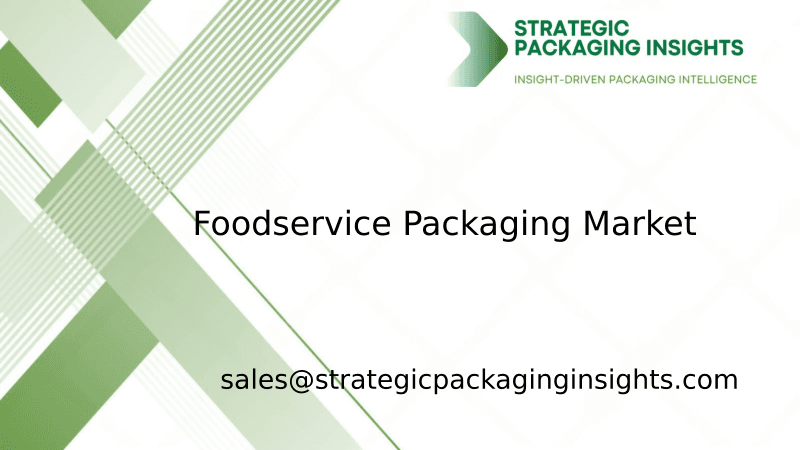
The foodservice packaging market was valued at $120 billion in 2024 and is projected to reach $180 billion by 2033, growing at a CAGR of 4.5% during the forecast period 2025–2033.

The nano-enabled packaging market was valued at $15.2 billion in 2024 and is projected to reach $35.6 billion by 2033, growing at a CAGR of 9.5% during the forecast period 2025–2033.

The Cold Seal Packaging market was valued at $1.5 billion in 2024 and is projected to reach $2.3 billion by 2033, growing at a CAGR of 4.8% during the forecast period 2025–2033.

The Transparent Barrier Packaging Films market was valued at $12.5 billion in 2024 and is projected to reach $20.3 billion by 2033, growing at a CAGR of 5.8% during the forecast period 2025–2033.

The Flatback Tape market was valued at $2.5 billion in 2024 and is projected to reach $4.1 billion by 2033, growing at a CAGR of 5.8% during the forecast period 2025–2033.
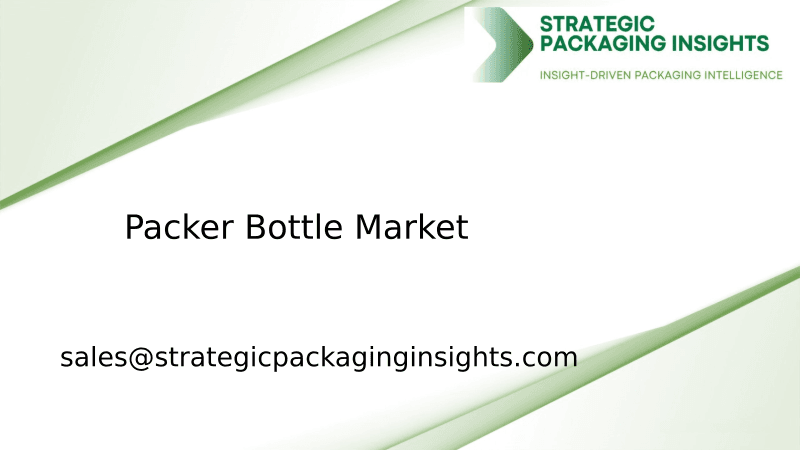
The packer bottle market was valued at $3.5 billion in 2024 and is projected to reach $5.8 billion by 2033, growing at a CAGR of 5.2% during the forecast period 2025–2033.
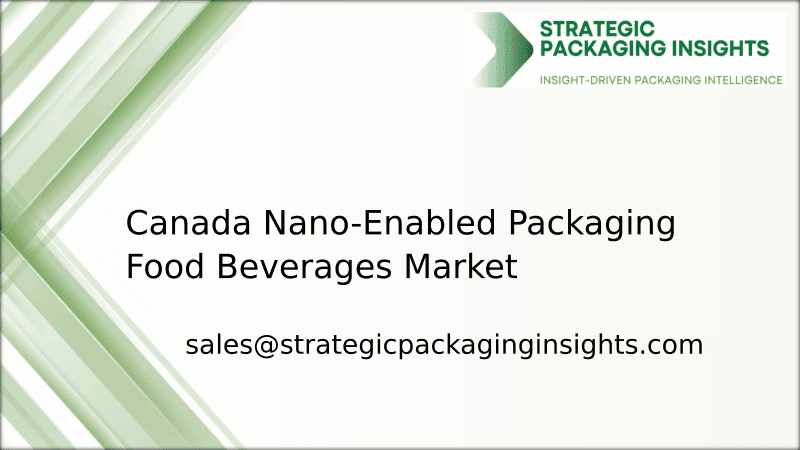
The Canada Nano-Enabled Packaging Food Beverages market was valued at $1.2 billion in 2024 and is projected to reach $3.5 billion by 2033, growing at a CAGR of 12.5% during the forecast period 2025–2033.
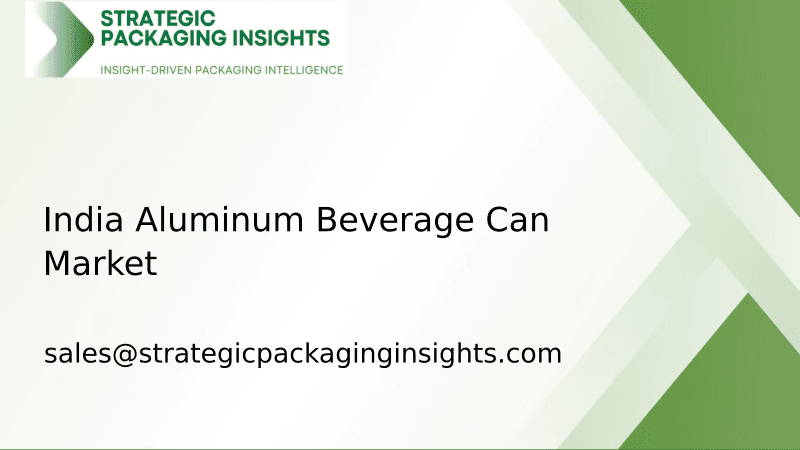
The India Aluminum Beverage Can market was valued at $1.2 billion in 2024 and is projected to reach $2.5 billion by 2033, growing at a CAGR of 8.5% during the forecast period 2025–2033.
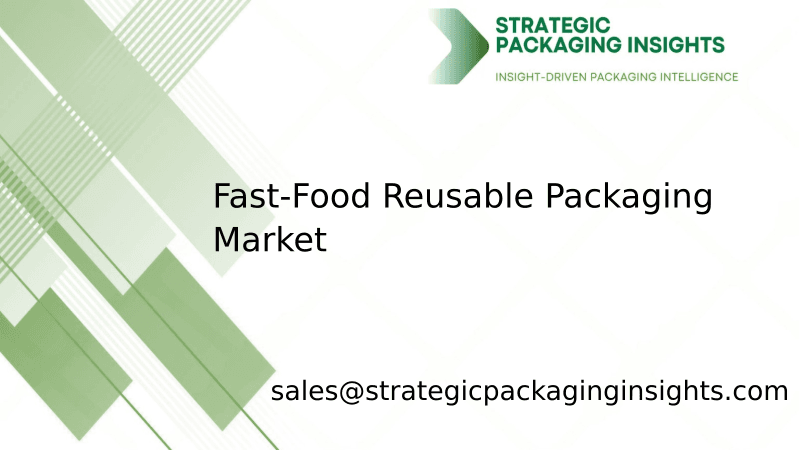
The fast-food reusable packaging market was valued at $1.2 billion in 2024 and is projected to reach $3.5 billion by 2033, growing at a CAGR of 12.5% during the forecast period 2025–2033.
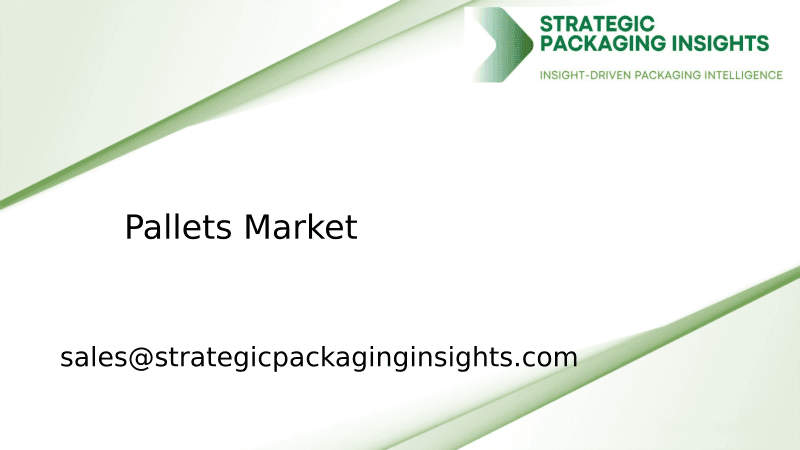
The pallets market was valued at $59.91 billion in 2024 and is projected to reach $88.69 billion by 2033, growing at a CAGR of 4.5% during the forecast period 2025–2033.

The lamination adhesives market was valued at $2.5 billion in 2024 and is projected to reach $4.1 billion by 2033, growing at a CAGR of 5.8% during the forecast period 2025–2033.

The garment packing machine market was valued at $1.2 billion in 2024 and is projected to reach $2.5 billion by 2033, growing at a CAGR of 8.5% during the forecast period 2025–2033.
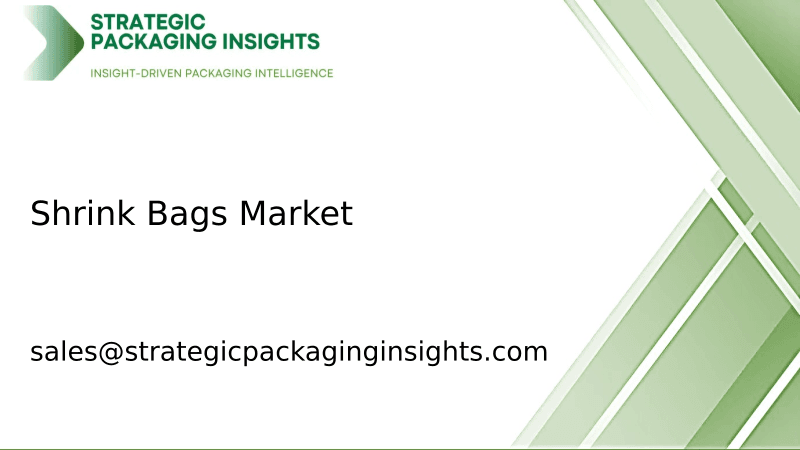
The shrink bags market was valued at $3.5 billion in 2024 and is projected to reach $5.8 billion by 2033, growing at a CAGR of 5.2% during the forecast period 2025–2033.

The beverage packaging market was valued at $128 billion in 2024 and is projected to reach $186 billion by 2033, growing at a CAGR of 4.2% during the forecast period 2025–2033.

The North America Freight and Logistics market was valued at $1,200 billion in 2024 and is projected to reach $1,800 billion by 2033, growing at a CAGR of 4.5% during the forecast period 2025–2033.

The Anti-Counterfeiting Packaging market was valued at $105 billion in 2024 and is projected to reach $182 billion by 2033, growing at a CAGR of 6.5% during the forecast period 2025–2033.

The Active and Modified Atmospheric Packaging market was valued at $15.2 billion in 2024 and is projected to reach $25.8 billion by 2033, growing at a CAGR of 6.5% during the forecast period 2025–2033.

The molded fiber packaging market was valued at $7.5 billion in 2024 and is projected to reach $12.3 billion by 2033, growing at a CAGR of 5.8% during the forecast period 2025–2033.

The micro packaging market was valued at $1.2 billion in 2024 and is projected to reach $2.5 billion by 2033, growing at a CAGR of 8.5% during the forecast period 2025–2033.

The Anti-counterfeit Pharmaceuticals Packaging market was valued at $80 billion in 2024 and is projected to reach $150 billion by 2033, growing at a CAGR of 7.5% during the forecast period 2025–2033.
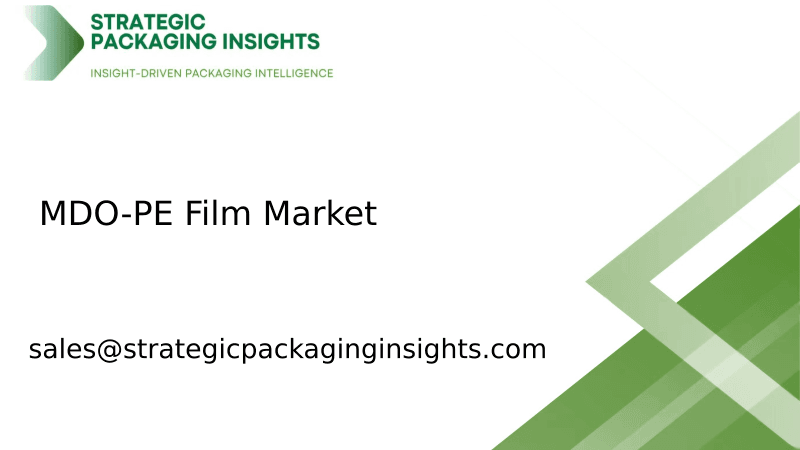
The MDO-PE Film market was valued at $3.5 billion in 2024 and is projected to reach $5.8 billion by 2033, growing at a CAGR of 5.2% during the forecast period 2025–2033.
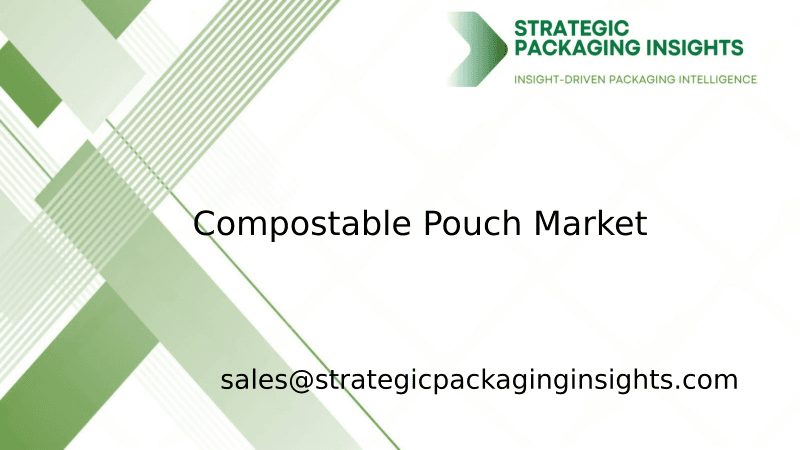
The compostable pouch market was valued at $1.2 billion in 2024 and is projected to reach $3.5 billion by 2033, growing at a CAGR of 12.5% during the forecast period 2025–2033.

The Hot Melt Glue Labeler market was valued at $1.2 billion in 2024 and is projected to reach $2.3 billion by 2033, growing at a CAGR of 6.5% during the forecast period 2025–2033.

The Ethical Label market was valued at $1.5 billion in 2024 and is projected to reach $3.2 billion by 2033, growing at a CAGR of 8.5% during the forecast period 2025–2033.

The Packaging Tensioner market was valued at $1.2 billion in 2024 and is projected to reach $2.3 billion by 2033, growing at a CAGR of 6.5% during the forecast period 2025–2033.

The foodservice packaging market was valued at $120 billion in 2024 and is projected to reach $180 billion by 2033, growing at a CAGR of 4.5% during the forecast period 2025–2033.

The nano-enabled packaging market was valued at $15.2 billion in 2024 and is projected to reach $35.6 billion by 2033, growing at a CAGR of 9.5% during the forecast period 2025–2033.

The Cold Seal Packaging market was valued at $1.5 billion in 2024 and is projected to reach $2.3 billion by 2033, growing at a CAGR of 4.8% during the forecast period 2025–2033.

The Transparent Barrier Packaging Films market was valued at $12.5 billion in 2024 and is projected to reach $20.3 billion by 2033, growing at a CAGR of 5.8% during the forecast period 2025–2033.

The Flatback Tape market was valued at $2.5 billion in 2024 and is projected to reach $4.1 billion by 2033, growing at a CAGR of 5.8% during the forecast period 2025–2033.

The packer bottle market was valued at $3.5 billion in 2024 and is projected to reach $5.8 billion by 2033, growing at a CAGR of 5.2% during the forecast period 2025–2033.

The Canada Nano-Enabled Packaging Food Beverages market was valued at $1.2 billion in 2024 and is projected to reach $3.5 billion by 2033, growing at a CAGR of 12.5% during the forecast period 2025–2033.

The India Aluminum Beverage Can market was valued at $1.2 billion in 2024 and is projected to reach $2.5 billion by 2033, growing at a CAGR of 8.5% during the forecast period 2025–2033.

The fast-food reusable packaging market was valued at $1.2 billion in 2024 and is projected to reach $3.5 billion by 2033, growing at a CAGR of 12.5% during the forecast period 2025–2033.

The pallets market was valued at $59.91 billion in 2024 and is projected to reach $88.69 billion by 2033, growing at a CAGR of 4.5% during the forecast period 2025–2033.

The lamination adhesives market was valued at $2.5 billion in 2024 and is projected to reach $4.1 billion by 2033, growing at a CAGR of 5.8% during the forecast period 2025–2033.

The garment packing machine market was valued at $1.2 billion in 2024 and is projected to reach $2.5 billion by 2033, growing at a CAGR of 8.5% during the forecast period 2025–2033.

The shrink bags market was valued at $3.5 billion in 2024 and is projected to reach $5.8 billion by 2033, growing at a CAGR of 5.2% during the forecast period 2025–2033.

The beverage packaging market was valued at $128 billion in 2024 and is projected to reach $186 billion by 2033, growing at a CAGR of 4.2% during the forecast period 2025–2033.

The North America Freight and Logistics market was valued at $1,200 billion in 2024 and is projected to reach $1,800 billion by 2033, growing at a CAGR of 4.5% during the forecast period 2025–2033.

The Anti-Counterfeiting Packaging market was valued at $105 billion in 2024 and is projected to reach $182 billion by 2033, growing at a CAGR of 6.5% during the forecast period 2025–2033.

The Active and Modified Atmospheric Packaging market was valued at $15.2 billion in 2024 and is projected to reach $25.8 billion by 2033, growing at a CAGR of 6.5% during the forecast period 2025–2033.

The molded fiber packaging market was valued at $7.5 billion in 2024 and is projected to reach $12.3 billion by 2033, growing at a CAGR of 5.8% during the forecast period 2025–2033.

The micro packaging market was valued at $1.2 billion in 2024 and is projected to reach $2.5 billion by 2033, growing at a CAGR of 8.5% during the forecast period 2025–2033.

The Anti-counterfeit Pharmaceuticals Packaging market was valued at $80 billion in 2024 and is projected to reach $150 billion by 2033, growing at a CAGR of 7.5% during the forecast period 2025–2033.

The MDO-PE Film market was valued at $3.5 billion in 2024 and is projected to reach $5.8 billion by 2033, growing at a CAGR of 5.2% during the forecast period 2025–2033.

The compostable pouch market was valued at $1.2 billion in 2024 and is projected to reach $3.5 billion by 2033, growing at a CAGR of 12.5% during the forecast period 2025–2033.
